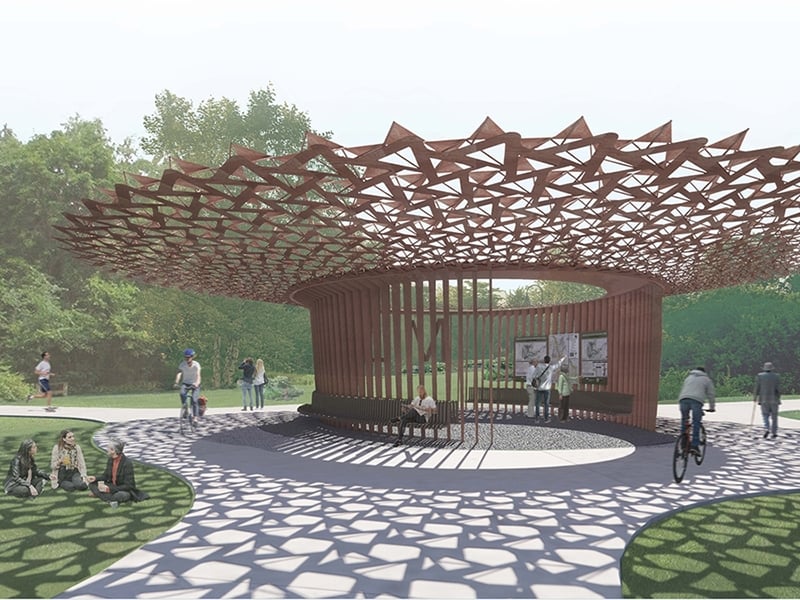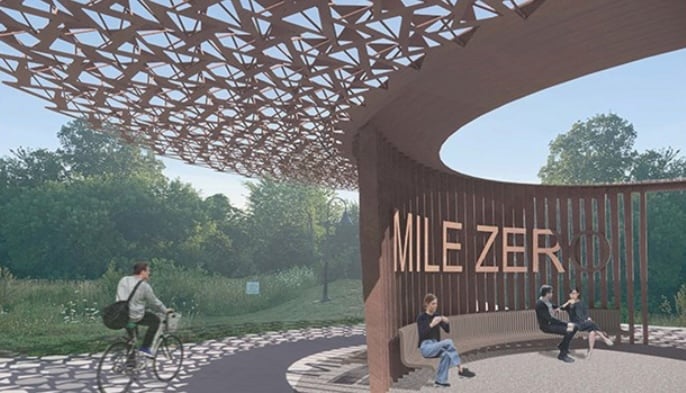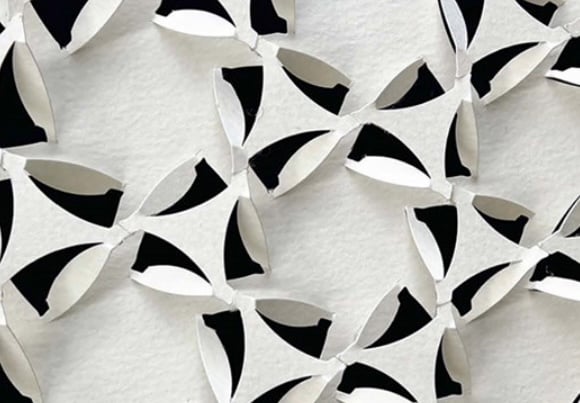
A sculptural design collaboration involving a Fayetteville artist and several faculty at the UA has won a national award for its design.
The piece, called Mile Zero, won a $10,000 2024 Forge Prize award officials announced last week.
Mile Zero was created through a collaboration by Emily Baker of the UA’s Fay Jones School of Architecture and Design; Vincent Edwards from the School of Art, mathematics professor Edmund Harriss from the Fulbright College of Arts and Sciences, Fayetteville artist Reilly Dickens-Hoffman; along with Isabel Moreira de Oliveira, a doctoral student at Princeton University’s Form Finding Lab and Eduardo Sosa, a research associate professor in the Department of Mechanical, Materials and Aerospace Engineering at West Virginia University. The design team will share the $10,000 prize.
Tony Diebold, chief structural engineer with Hillsdale Fabricators, based in St. Louis, helped to further develop their idea.

The design was created as a potential design installation/steel shade structure at Fayetteville’s Kessler Park, located at “mile zero” of the 40 mile Razorback Greenway multi-use trail that spans from Fayetteville to Bella Vista.
The concept uses the Spin-Valence system, developed by Baker while she was in graduate school and based on the Japanese art of kirigami that uses folding and cutting to create 3D objects out of flat material.
“My aim is to find ways to adapt the ‘choreography of construction’ to unlock news ways of assembling buildings,” Baker said. “Mile Zero, if built, will become the largest application of Spin-Valence in a public space.”
There are currently no plans to build the installation. If it were to be built, the piece would replace the simple bollard that currently marks the beginning of the Razorback Greenway in Fayetteville.
The Forge Prize was established in 2018 by The American Institute of Steel Construction as a way to recognize “visionary emerging architects, architecture educators and graduate students for design concepts that embrace innovations in steel as a primary structural component.”


